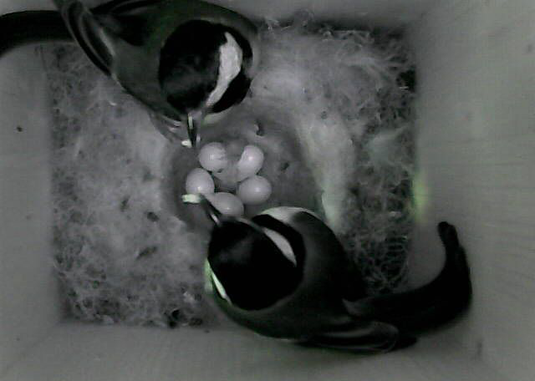Birds in an urban environment have fewer and smaller offspring than in rural settings

A study by researchers at Ludwig Maximilian University (LMU) and the Max Planck Institute of Ornithology showed that birds in an urban environment have fewer and smaller offspring than in rural settings.
Great Tits are synanthropes who have followed humans into large cities. A team led by Dr. Philipp Sprau at LMU in Munich and the Max Planck Institute of Ornithology in Seewiesen was investigating the adaptive mechanisms needed by the birds for urban life. Their study showed that while Great Tits began to breed earlier in cities, their clutches were smaller and nestlings weighed less than their rural counterparts upon leaving the nest. The research results were reported in the journal Behavioural Ecology.
To study the effects of urbanization, the scientists placed 600 nest boxes in 12 forest areas and another 156 in the city of Munich. Along with key life history traits, such as the start of egg laying, clutch size, and number and weight of nestlings, they correlated breeding success for the tits with environmental parameters characteristic for urbanization such as temperature, humidity, light, and noise that were measured throughout the breeding season.
Although the measurements of environmental parameters showed differences between city and rural environments, the scientists found no direct relationship between these parameters and the quantified life history traits. "Therefore we divided the city into three zones ranging from areas with conditions close to natural habitats to those characteristic of urban settings," said Professor Niels Dingemanse of LMU, head of the study group for the evolutionary ecology of variation at the Max Planck Institute of Ornithology. This analysis of the varied extreme urbanization also revealed no specific patterns. The simple division between "city" and "forest" habitats still explained the differences in life histories best.
"Our study showed how difficult it is to accurately measure the effects of urban development on natural ecosystems," commented Sprau, principal author and head of the study. "Although we have quantified various environmental parameters, no clear patterns were found which can explain the differences in reproductive success." Thus for future studies it must be considered that individual features of urban environments such as light and noise may not be enough to describe the prevailing environmental conditions adequately. Other environmental factors than those quantified in this study should be considered in addition in future studies to assess the impact of the multidimensionality of urbanization on wildlife.
More information: Philipp Sprau et al. Multidimensional environmental predictors of variation in avian forest and city life histories, Behavioral Ecology (2016). DOI: 10.1093/beheco/arw130
Journal information: Behavioural Ecology , Behavioral Ecology
Provided by Ludwig Maximilian University of Munich



















